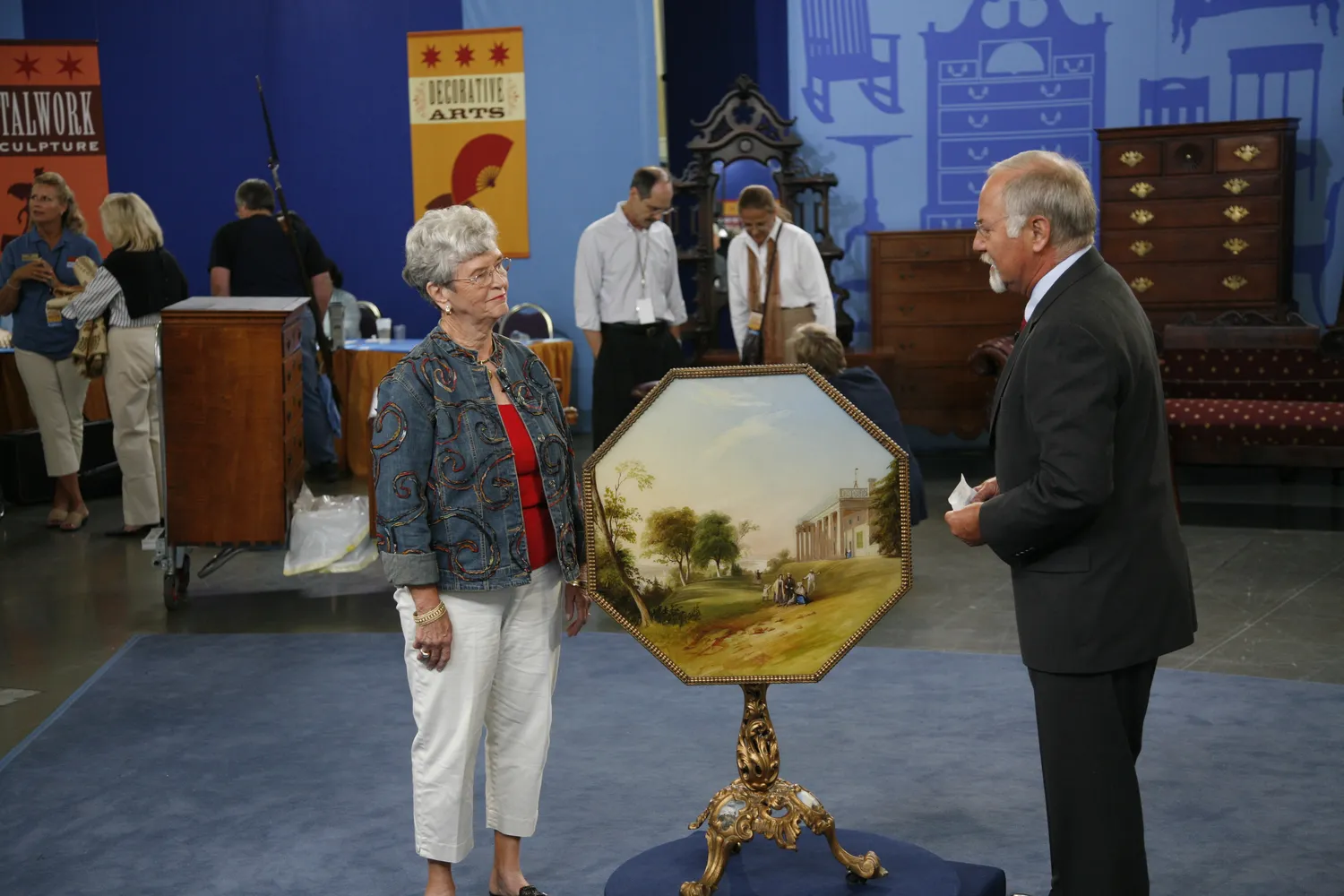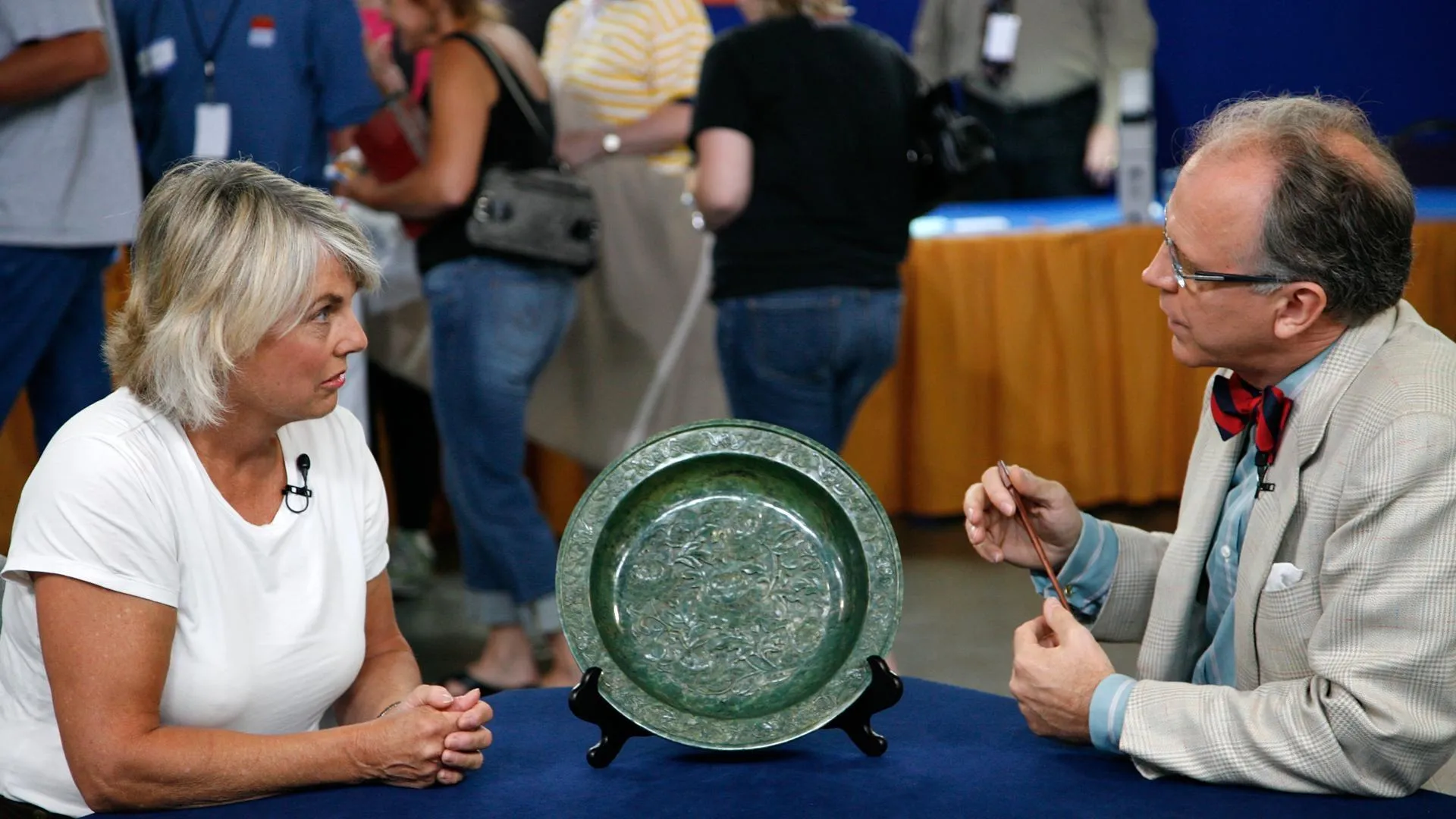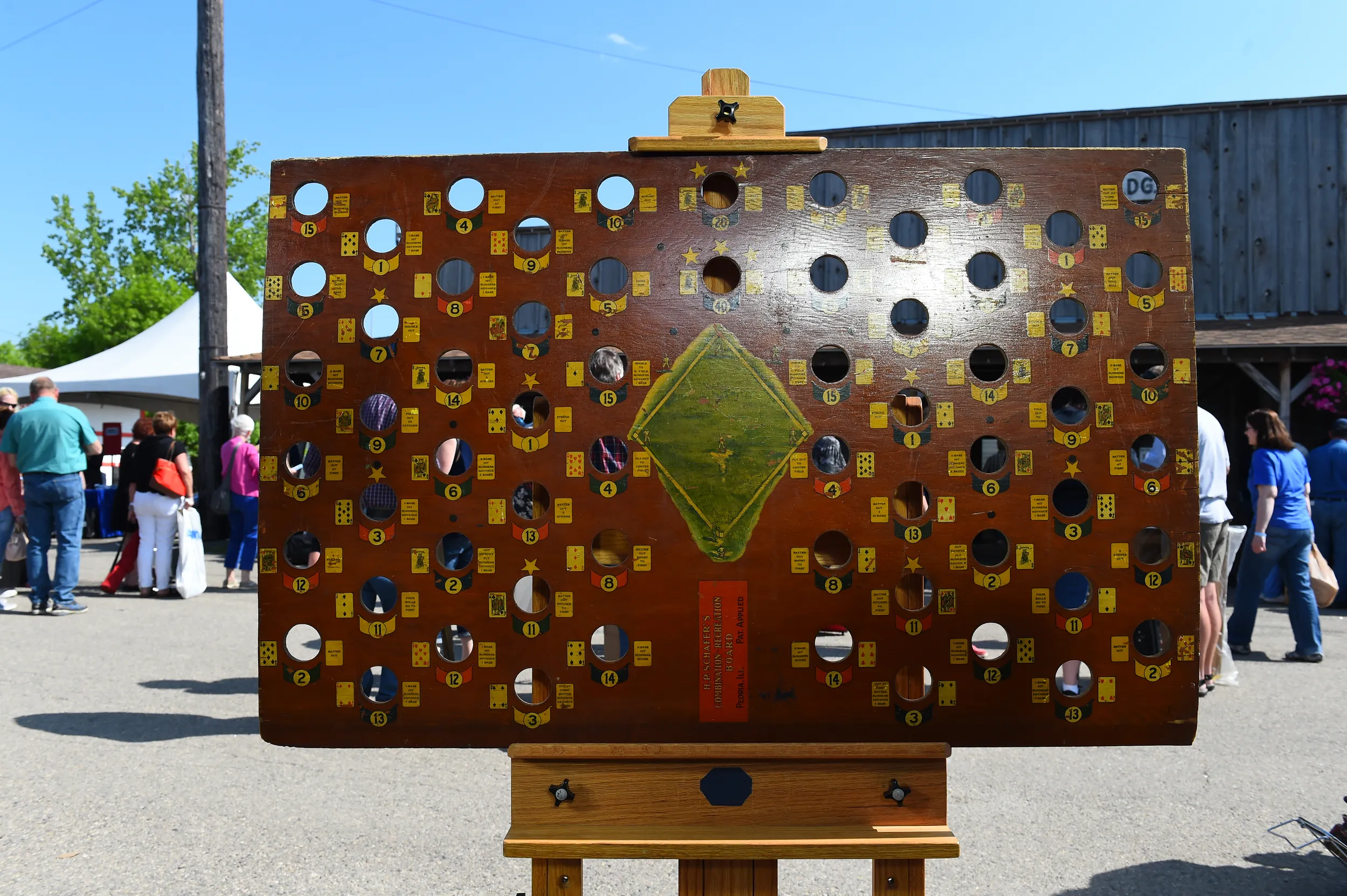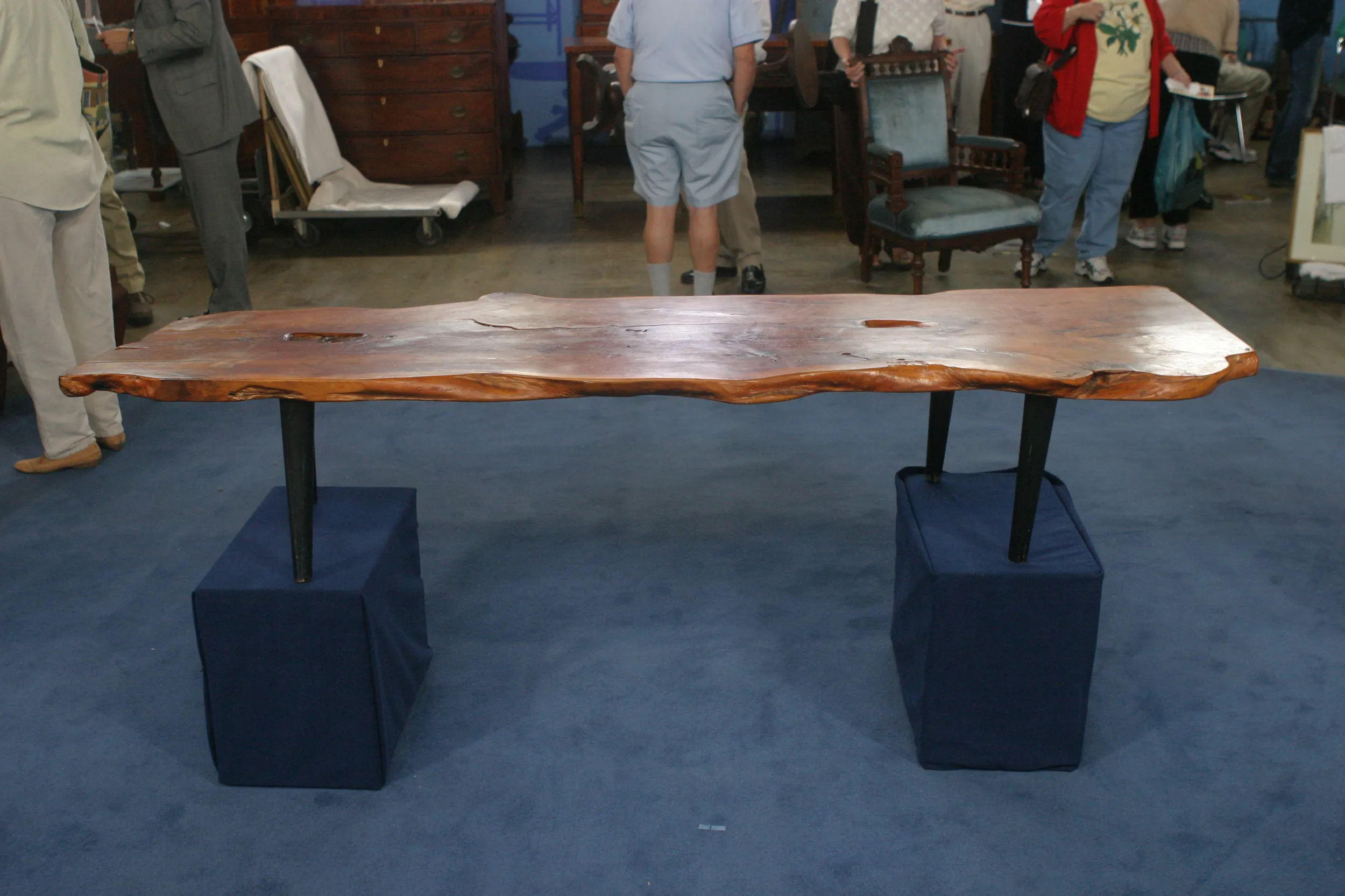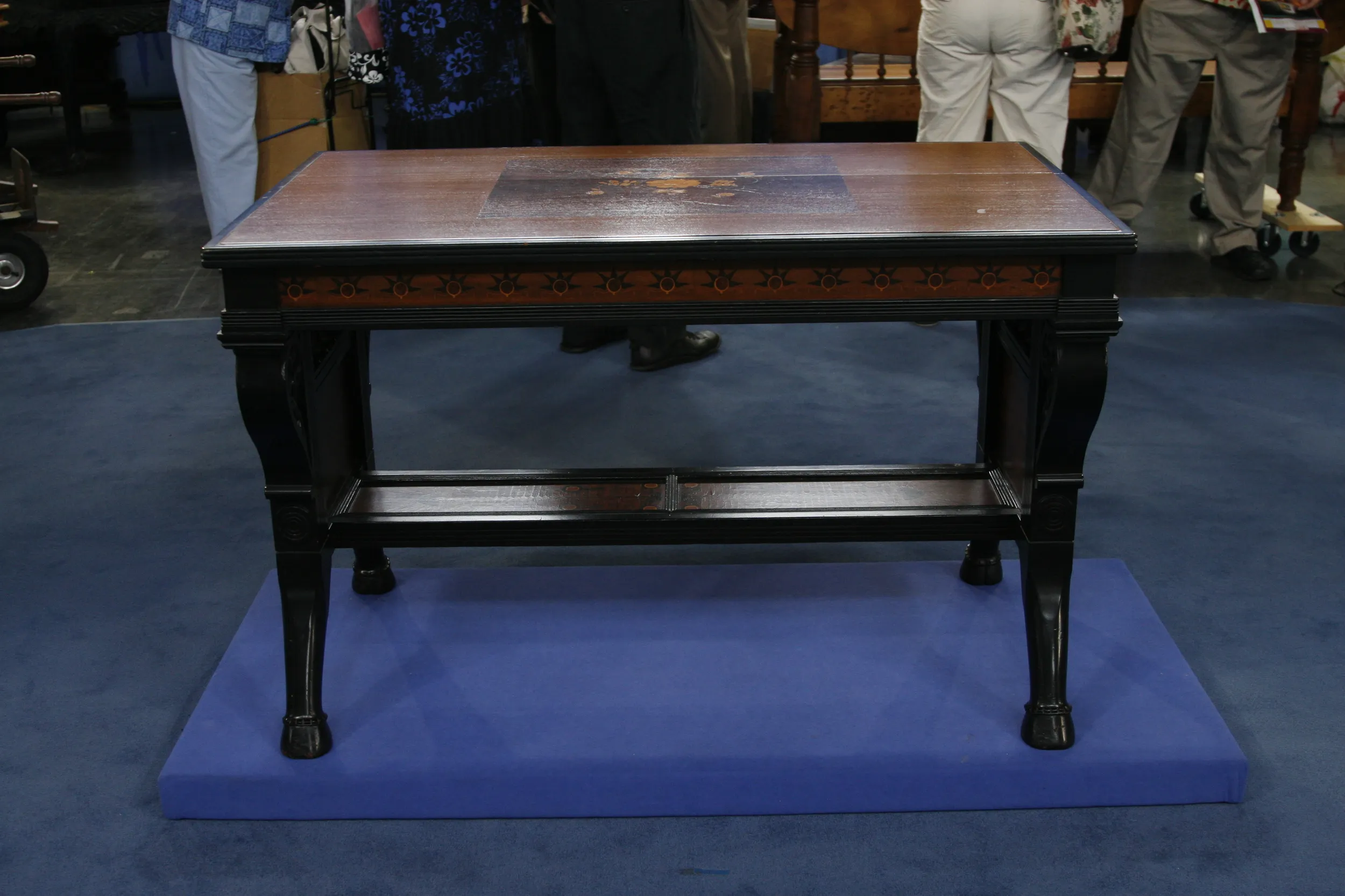GUEST: We purchased this, my husband and I, in probably 1977, '78.
APPRAISER: We've seen similar tables, but the thing that differentiates this table from others is this beautifully reverse painted glass scene on the top depicting Mount Vernon. It's interesting to note that the table that we feel was made about 1860 depicts Mount Vernon when it had just been acquired for preservation purposes…
GUEST: Okay.
APPRAISER: ...with $200,000 in donated money by the Mount Vernon Ladies' Association. After George Washington died, the house very quickly fell into disrepair. In fact, it was in danger of disappearing altogether.
APPRAISER: This table is a Rococo Revival table. The base is made of cast iron. The top is made of wood, with this ripple-molded surface. The application of this ripple molding on the edge is something you see frequently in American manufactured Furniture from the Gothic Period, the late 1840s up to Civil War time, and that was another means by which we could date the Table. The stunning thing about it is that the top depicts Mount Vernon as it should look, restored, and in fact, it would appear as though these People who are visiting the property are tourists. They're pointing to the house, they're loving it. So this was a very interesting example of historic preservation. Mount Vernon, to my knowledge, was the first important effort in America to preserve an historic property. The fact that it pictures it so early on I find totally fascinating. We've seen similar tables with generic tops, you know, flowers or whatever it might be. But this is so specific. It also has survived in remarkably good condition. Somebody went to the trouble of grain-painting the top and the platform for the top to look like an exotic wood.
GUEST: Right.
APPRAISER: Which would've been rosewood.
GUEST: Right.
APPRAISER: Rosewood was used extensively during that period. They wanted this to look good, even though it wasn't going to show a whole lot. Mount Vernon during the Civil War was neutral territory. Even though there was fighting all around here, this was a protected property as early on as that, and it wasn't until 1960 it was declared a national historic landmark. So what was paid for the table way back then?
GUEST: We paid about $500 for it.
APPRAISER: Yeah. We had a diversity of opinions, but I think for auction purposes, I would estimate its value somewhere, let's say, in the $8,000 to $12,000 range.

